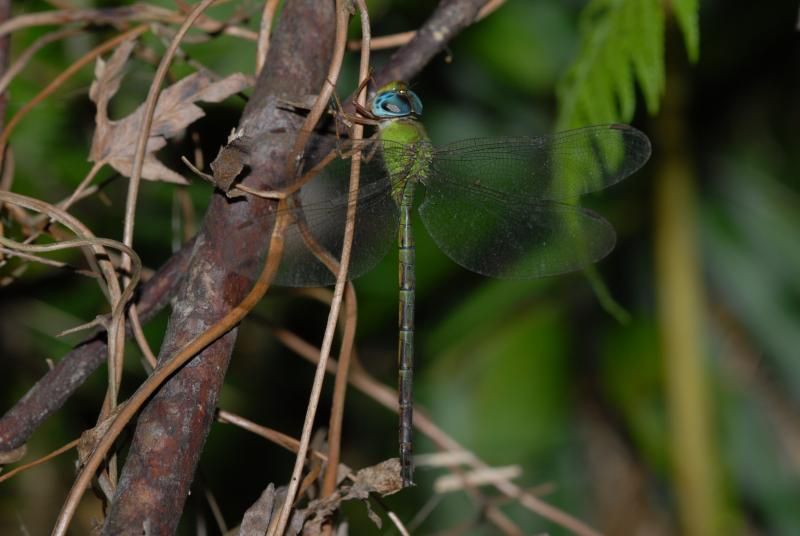| Citation |
|
Description |
Geographic Range [top]
Range Description: Gynacantha bayadera is widespread, with scattered records from India to south China and northern New Guinea. It has been recorded from a number of mainland Chinese provinces, but Wilson & Xu (2008) consider its distribution in mainland China to be uncertain. There are many old records from Sumatra and Java, but fewer records from Borneo, where it has not yet been found in Sarawak.
Countries occurrence:
Native:
China (Hainan); India (Andhra Pradesh, Assam, Karnataka, Madhya Pradesh, Maharashtra, Meghalaya, Nagaland, Nicobar Is., Orissa, Sikkim, Uttaranchal); Indonesia (Jawa, Kalimantan, Lesser Sunda Is., Papua, Sumatera); Malaysia (Peninsular Malaysia, Sabah); Myanmar (Myanmar (mainland)); Nepal; Philippines; Singapore; Taiwan, Province of China; Thailand; Viet Nam
Continuing decline in area of occupancy (AOO): Unknown
Extreme fluctuations in area of occupancy (AOO): Unknown
Estimated extent of occurrence (EOO) - km2:
Continuing decline in extent of occurrence (EOO): Unknown
Extreme fluctuations in extent of occurrence (EOO): Unknown
Continuing decline in number of locations: Unknown
Extreme fluctuations in the number of locations: Unknown
Upper elevation limit (metres): 2100
Range Map: Click here to open the map viewer and explore range.
Population [top]
Population:
This species is known from scattered records, but it is crepuscular in it its habits and almost certainly under-recorded. It is likely to be quite common where it occurs.
Current Population Trend: Unknown
Additional data:
?Continuing decline of mature individuals: Unknown
?Extreme fluctuations: Unknown ?Population severely fragmented: No
Habitat and Ecology [top]
Habitat and Ecology:
This is a crepuscular species which probably breeds in forested swamps and marshy areas, or in forest pools. Although it has been recorded at high altitudes, it appears to mainly be a lowland species.
Systems: Terrestrial; Freshwater
Continuing decline in area, extent and/or quality of habitat: Unknown
Threats [top]
Major Threat(s):
Deforestation is likely to be the major threat to this species. However, it does not appear to be under any major threat at present.
Conservation Actions [top]
Conservation Actions:
No special conservation measures appear to be needed for this species. However this a need for additional distributional information and for fresh data from large parts of the species range.
Citation: Mitra, A. 2010. Gynacantha bayadera. The IUCN Red List of Threatened Species 2010: e.T167060A6305630. http://dx.doi.org/10.2305/IUCN.UK.2010-4.RLTS.T167060A6305630.en. Downloaded on 07 June 2016.
Disclaimer: To make use of this information, please check the .
Feedback: If you see any errors or have any questions or suggestions on what is shown on this page, please provide us with feedback so that we can correct or extend the information provided
|

